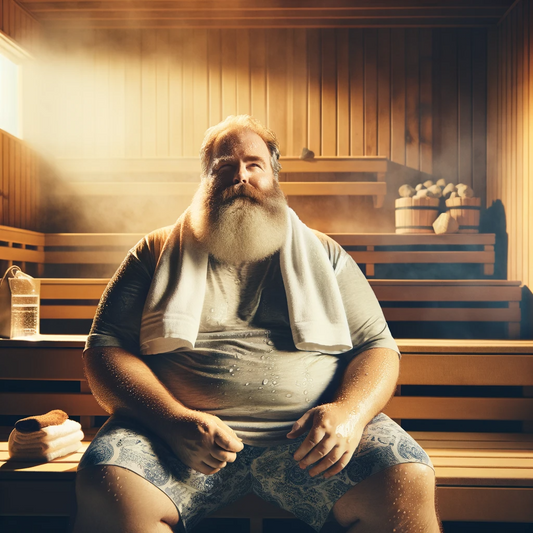Over the past few years, the use of saunas has skyrocketed, largely due to the numerous health and wellness perks they offer. However, just like any wellness habit, using a sauna safely calls for a comprehensive understanding and consciousness of its potential risks. In this guide, we will expose you to these concerns, bringing references from scientific studies under discussion.
Can burning occur in a sauna?
While rare, sauna-induced burn injuries are a reality. In a typical wooden sauna, air temperature can rocket to around 70º - 100º degrees Celsius (158º - 212º degrees Fahrenheit), a heat intensity that could result in burns resulting from prolonged skin contact or touching the heated sauna parts.
A disturbing report published in the 1996 edition of the Burns Journal highlighted cases where individuals experience burns due to careless behavior like settling skin directly onto heated stones[1]. Therefore, it's recommended to always sit on a towel in a sauna and maintain a safe distance from heat sources, preventing possible accidents.
Could a sauna cause fainting?
The sweltering sauna environment could place a substantial strain on one's cardiovascular system. Within this unforgiving heat, blood pressure can waver, heart rate can skyrocket, and in some cases, it could lead to a sudden bout of lightheadedness or even fainting. This is especially true for elderly people, those with pre-existing heart conditions, or anyone dehydrated.
Drawing from a 2018 study published in the Journal of Science and Medicine in Sport, there could be a sudden drop in blood pressure after using a sauna, which might precipitate fainting in susceptible individuals[2]. Consequently, drinking ample water and allowing the body to gradually cool down post sauna use are crucial tips to avert such incidents.
How does a sauna affect breathing?
The sauna's dry, hot air could make it challenging for some individuals to breathe effectively, especially those with chronic respiratory conditions like asthma. The American Lung Association suggests people with respiratory concerns to consult their doctors before hopping into a sauna[3].
Identifying signs to leave the sauna
Your body carries its intuitive wisdom, which guides you when it's time to wrap up your sauna session. If you feel a sudden wave of dizziness, lightheadedness, overheating, or nausea, consider these your body's distress signals to leave the sauna. Experts from the Finnish Sauna Society counsel limiting sauna time to a maximum of 15 to 20 minutes, followed by a comfortable cooling down phase outside before stepping back in[4].
In closing, while it's undeniable that saunas offer a myriad of health advantages, being aware of the substantial risks is elemental for a safe yet enriching sauna experience. By adhering to simple safety protocols, one can unabashedly relish the therapeutic heat of a sauna.
What if I have pre-existing conditions or health concerns?
We have written about who should avoid the sauna. If you have any type of heart conditions, have had a heart attack or are at risk of having a heart attack, hypertension or hypotension, lung issues, are pregnant, dehydrated, and several others – we urge you to consult with your doctor first before entering a sauna. PLEASE do not risk this and get clearance first, sauna bathing has loads of health benefits, but if your body isn’t equipped to handle it - it can be fatal.
References:




